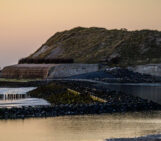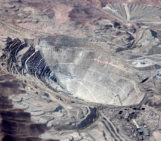
Tides are very long-period waves characterized by the rise and fall of sea levels. This phenomenon occurs in response to forces exerted jointly by the moon and sun, generated in the ocean, and propagating toward the coast. Tides can be divided into two main types: low tide and high tide. High tide occurs when sea water rises above the mean level while low tide occurs when sea water falls below the mean level. Tides can also be classified as daily or semi-diurnal depending on the number of tidal cycles that occur in a day.
Tidal movements have a significant impact on coastal sediment transport. As the tide rises, seawater flows into the coastal areas, carrying sediment to the beach and shallow areas. As the tide recedes, seawater carries sediment back out to sea, creating a process of erosion and sediment transport along the coast. Therefore, tidal movement can be considered as an important factor in the transport of sediments along the coast. It can affect both the amount and distribution of sediments in coastal areas and estuaries and trigger erosion and deposition processes that shape the coastal landscape.
In addition, tidal movement also has a major impact on marine fauna and flora. Tides create a variety of coastal habitats, including shallow areas, beaches, reefs, and estuaries. For example, some types of algae require a humid environment to grow and reproduce. At high tide, these algae are inundated with seawater and can multiply. When the tide goes out, the algae are exposed to the air and can dry out and die. In this sense, the image presented represents the process of rising tides in the municipality of Garopaba (Brazil) and illustrates the transport of sediments by wave energy and the creation of environments conducive to the growth of algae.
Photo and caption by Marina Refatti Fagundes, shared on imaggeo.egu.eu.
Imaggeo is the EGU’s online open access geosciences image repository. All geoscientists (and others) can submit their photographs and videos to this repository and, since it is open access, these images can be used for free by scientists for their presentations or publications, by educators and the general public, and some images can even be used freely for commercial purposes. Photographers also retain full rights of use, as Imaggeo images are licensed and distributed by the EGU under a Creative Commons licence. Submit your photos at http://imaggeo.egu.eu/upload/.





Sistem Informasi
Wow, the images of the movement of the tides featured in the article are absolutely breathtaking! The vibrant colors and dynamic patterns captured in these photographs evoke a sense of awe and wonder. It’s incredible to witness the powerful forces of nature in action. The tides, with their ebb and flow, remind us of the constant rhythm of our planet and the interconnectedness of Earth’s systems.